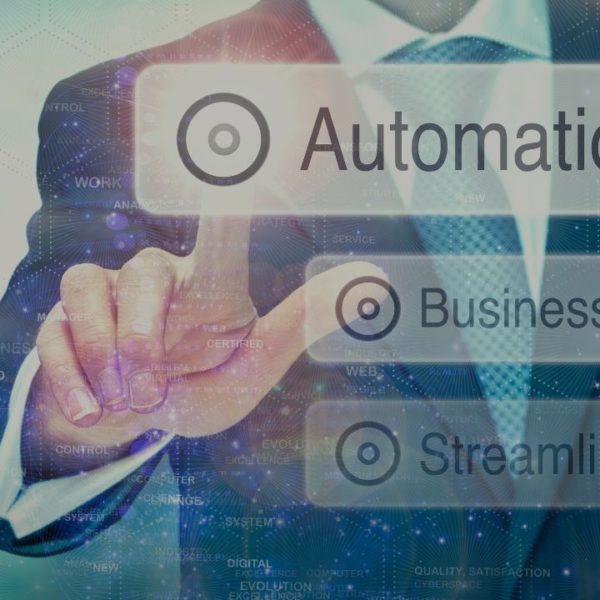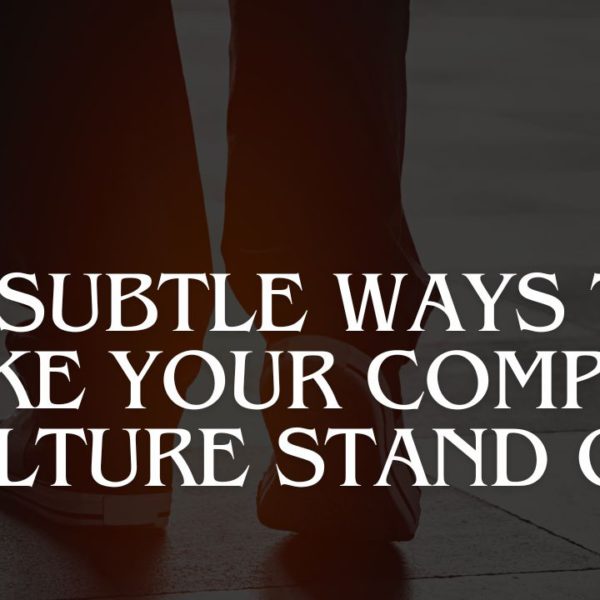Hey, I’m Michael Culp, and today, I’m going to show you 10 Facebook ads strategies that will help you grow your business.
First of all, why should you advertise your business on Facebook?
The answer is pretty simple. Facebook has 1.96 billion daily active users and 82.4 billion ad revenue every single year. The daily user data show that you have an extreme potential pool of customers which you can reach. And the ad revenue demonstrates that a lot of companies are using Facebook for advertising, which means that it’s profitable.
Now that you know the potential you have with Facebook ads, let’s dive into how you can best use it to grow your business!
Table of Contents
1. Technical Skills and Ad Copy
In the past, to be successful with Facebook ads, the main thing you had to know was how to use the platform. But things have changed for the better, and most of the campaigns are now automated and simple to set up.
Because of that, the critical factor to success isn’t how to use the platform anymore. Now your success is tied to how good of a copywriter you are. Copywriting is a form of persuasive language that influences the potential buyer to take some action.
When it comes to applying copywriting to your ads, you need to pay attention to how your words, images, and videos are working together to present your offer to your audience.
2. Data
Data is the most important aspect to make your ads profitable. Most Facebook advertisers fail because they don’t know how to leverage data. Keep in mind that Facebook advertising is a game of data. The more data you have the lower your cost for acquiring a new client will be.
The reason why Facebook is such a powerful advertising tool is that it allows you to target users based on data. You can target them based on their age, gender, interests, behavior, and so on.
This sounds like a great opportunity, right? Yes, but…
Interests and behavior are very weak ways to advertise your business. The basic targeting available in Facebook ads will not be the most profitable way to run your campaigns.
The best way is to leverage Lookalike audiences and retargeting.
Lookalike audiences are audiences within Facebook that look like your customers. You have the option to import your customer list into Facebook, and Facebook will find targets that are very similar to them. The more customers you import, the more effective the targeting will be.
But if you have no customers, to begin with, you need to start with a cold interest audience.
3. Cold Interest Audience
Cold interest audiences are important to test and include because they allow you to tap into an almost unlimited amount of potential leads, customers, and sales. The goal of this campaign is to leverage the data that Facebook has collected from its users.
The cold part means that these are people who have never heard about you before. Interest means that you’re going to be targeting them based on their specific interests.
To target this audience based on their interests, you must have an ideal customer avatar. Your customer avatar is a representation of the main characteristics that most people who compose your audience have in common. You need to think about their demographics, their geographics, and psychographic characteristics.
What is their age? Income level? What do they desire? What are their hobbies? What are the things they aspire to? What are their fears and frustration?
Based on all these common characteristics you can set up the interests you want Facebook to target.
For example, let’s assume that you have an eCommerce store that sells athletic shoes. You’d target 18-29-year-old males, who follow athletes and influencers, are loyal to one or two sports brands and don’t have a high-paying job.
If you can generate some purchases, email leads, and website traffic, you can use this data to leverage lookalike audiences. Milking this data is where you’re going to see the best results.
4. Look-Alike Audience
The lookalike is a term for an audience of people who have similar characteristics to another audience. The other audience can be your email list or your customer list.
There isn’t much to say here. You just need to import this list to Facebook, so the Facebook algorithm can target similar audiences to the list you have imported.
5. Warm Custom Audience
Warm means that these people have seen your stuff sometimes and in some place before. The custom means that they are specific to you and your business. It’s common to create warm audiences based on how people have interacted with your business off Facebook such as visiting your website, your email list, or your Youtube channel.
You can also create warm audiences based on somebody who interacted with some of your content on Facebook, such as watching a certain percentage of your videos or clicking a lead form for example.
6. Omnipresent Advertising Strategy
Based on these audiences that you’ve created, you can create an omnipresent advertising strategy to expand your reach. This will allow you to show up to more people, more often, and for less money. Your goal is to increase touchpoints and interactions with your audience.
In marketing, there is a psychological phenomenon called the mere exposure effect. This means that the more often you show up to someone, the more likely they are to trust you.
Similar to that, there’s the marketing rule of 7, which says that it takes on average 7 interactions with your brand, before people buy your product. 7 is just a rule of thumb and based on your offer it can take more or fewer interactions.
So, keep in mind that frequency equals trust. The more often we see something, the more we like it. Showing up more often, in front of the same people, is a great strategy.
To create an effective omnipresent strategy, keep reading the next tips!
7. Retargeting Campaign
You need to compile and combine all retargeting audiences you have to compose your omnipresent strategy. Our goal here is to show up in front of as many warm people as possible.
The first audience you should be targeting is your email list or your customer list. Here you just need to upload these lists to Facebook.
Your next audiences will come from meta sources. The meta source includes people who opened one of your lead forms in the past months and people who watched a certain percentage of one of your videos. You can also target people who engaged with your Instagram account and with your Facebook page in the past months.
When setting up your campaign, Facebook settings will come with a box called “advantage custom audience” marked. You must uncheck this box, because leaving it checked will expand your warm audience with cold audiences, and it will end up ruining your campaigns.
Next, as a campaign objective, you need to choose an awareness campaign. Also, make sure to check the box “advantage campaign budget” off. You don’t want Facebook optimizing things for you here.
Then, you need to create different ad sets, each one containing different ads and set up the budget for $1 or $2 for each ad. When it comes to impressions, you need to set up 1 impression every 4 days.
Your options are many when it comes to creating different ads. You can create video and image ads. No matter which you choose, you need to make sure that the image and the video is great.
8. Types of Ads
In this section, I’m going to show you the 6 main types of ads that you can use in your campaigns.
- Core Ad: this ad revolves around your core philosophy, what your company believes and why. This ad will attract people who believe in what you do.
- Contrary Ad: the goal of this ad is to challenge industry norms and dogma. For example, if you sell a weight loss program based on the keto diet. You can attack the traditional advice that teaches people to eat carbs and count calories. Polarizing is a great way to stand out in your marketing communications.
- How to Ad: this type of ad allows you to provide value to your potential customers and establish authority, credibility, and expertise. The goal is to prove to people that you can actually help them.
- Case Study Ad: case study ad highlights testimonials, interviews, reports, or case studies. You can base your ad on any kind of social proof that comes from your customers. A pro tip here is to try to collect video testimonials from your customers.
- Conversation Ad: the goal here is to start a conversation or an interaction with your audience. This type of ad will also help you to understand more about your market, gain feedback, and insights, and relate more to your audience. The goal is to ask a question or create some type of content that triggers a response.
- Conversion Ad: the conversion ad is an ad designed specifically to make someone take an action. This can be making a purchase, signing up for an email list, or signing up a form with their phone number, the options are many. It’s extremely important to make a strong call to action in this type of ad.
9. Generate Leads
To be successful you need to collect the user’s information so that you can follow up with them. The most common thing to do here is to collect the user’s email information. This is known as lead generation. Most people are doing these lead generation campaigns, but a high percentage of them are doing it in the wrong way.
Getting a lead isn’t a difficult job. You just need to make an irresistible offer that your customers can’t refuse. This is very common in giveaway campaigns in which businesses offer an iPad, free money, and even a car sometimes.
The problem with this is that people opt-in to your list just because they want the chance of winning the gift. They have no interest in buying from you in the future.
The secret to generating the kind of leads that will buy from you comes down to focusing on acquiring quality leads. A quality lead is someone relevant to your offer, is motivated to take an action, and has the buying power to make the purchase.
So, to attract these quality leads you need to build a great lead magnet. A lead magnet is a piece of content that you’ll offer your audience in exchange for their email address. The lead magnet must be a very actionable piece of information that will help them solve a problem.
After you have a lead, you can start to follow up with them to build trust and promote your offers. Another important step to increase sales is setting up a conversion mechanism, which is actually your funnel.
10. Build a Funnel
The goal of your funnel is to turn your leads into customers. The best way to set up your funnel is by leveraging the automation that software allows you to build. Automation is a process designed to constantly follow up with new leads.
A great way to start an interaction is to send specific questions for them, asking about something directly related to the lead magnet they signed up for. It’s important to ask something other than a yes or no question. The goal is to initiate a conversation and get them to talk about themselves and their goals.
When it comes specifically to your ads, if you start running Facebook ads without a funnel in place, your chances of failing are much higher. When it comes to your funnel, the first thing you need to think about is where your funnels are going, where is the destination of your ads, and where’s your audience landing.
A great way to build a high-converting funnel is by using some software. There are a lot of great options in the market such as Clickfunnels, GoHighLevel, Groovefunnels, and Instapage. I made a review detailing GoHighLevel Pricing.
Most of the time, people run ads directly to the product page. And if your product isn’t an impulse purchase type of product, chances are high that you’re going to lose money.
Usually, the more expensive your products are, the more resistance people will show before buying them. Because of that, you need to put some steps in place, between the time someone sees your ad, and the time you ask them to purchase your product.
A great way to set up your campaign is to start with simple ads, intending to just engage people. This first ad has the goal of just helping people, providing an informational piece of content that will help them solve a problem. What will happen is that even if they’re not looking for your product, they can look at the content just for curiosity. The goal of this ad is to move people from awareness to engagement.
It’s important to build your funnel with engaged leads before you start thinking about sales. And once you have an engaged lead, your goal should be to make them interested in your product or service.
In this next stage, you can start introducing your product or service. Since they are already engaged with you, they will be more willing to listen to what you have to say. The best strategy here is to leverage the email list you’re building and set up another type of ad.
So, you’re going to build an ad that’s going to sell the product or service, but the people you’re going to target are people who engaged with your brand by watching a video, visiting your website, leaving a comment or a like, and things like that. Any action that someone took on your ad can be considered a form of engagement.
The next type of ad is to advertise to your hottest audience. These are people who visited the shopping page on your website, added stuff to the cart without purchasing, or spent a lot of time on your website. This is the type of ad that will have the highest conversion rate.
To summarize, your funnel consists of three main steps: engage, build interest, and sell.
Conclusion
Facebook advertising gives you many benefits, including increasing sales by sending people to your website to purchase. Lead generation by collecting names, emails, and phone numbers from your target customers. And distribution of content to maximize your reach.
Today, you learned how you can leverage Facebook ads with 10 strategies. To recap:
- Technical Skills and Ad Copy
- Data
- Cold Interest Audience
- Lookalike Audience
- Warm Custom Audience
- Omnipresent Advertising Strategy
- Retargeting Campaign
- Types of Ads
- Generate Leads
- Build a Funnel

I am a passionate, adventurous, and insatiate learner who loves to write about the latest technology trends. My experience working in an MNC has motivated me to understand that there are certain niche requirements for writing strategically about brands’ messages towards people’s interests which I’ve mastered over time through trial and error of many projects under various clients across diverse industries. It is my honest effort to put my experiences and knowledge of industry towards readers.






